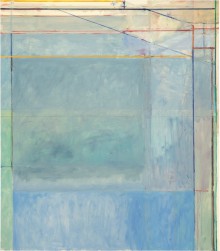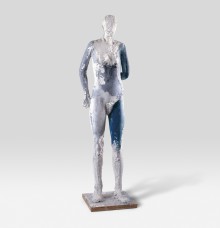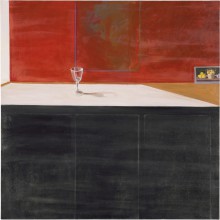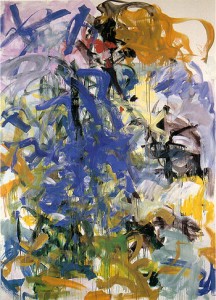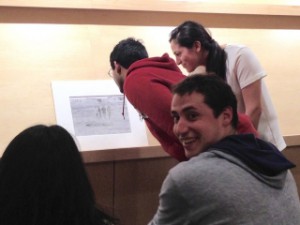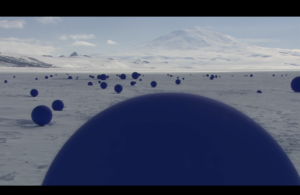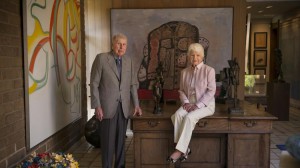Welcome to the Anderson Collection
Stanford University's free museum of modern and contemporary American art
Search Results: Pharmacy Online ⭐ www.pills2sale.com ⭐ Where Can I Buy Diflucan One - Can You Buy Diflucan Otc
Ocean Park #60
Chain Gang
Standing Figure II
Candy Counter
Before, Again IV
Anderson Collection at Stanford solidifies Bay Area’s art stature
…suits of art making – and of collecting, done right – generate such telling patterns. Another occurs in a nearby corner space where a cruciform black-on-black square “Abstract Painting, 1966” by Ad Reinhardt flanks Kelly’s “Black Ripe” (1955), in which a bulbous, central, flat black form swells nearly to the edges of a nearly square white canvas. It is almost as if Reinhardt had completed a thought broach…
A new start for art at Stanford: Cantor Arts Center and Anderson Collection reopen
…erman’s resignation in late November. The university has been circumspect about personnel matters, but did issue a press release at the time indicating that a transition team “will work closely with stakeholders from across the campus and community to situate the museum for ongoing success.” Mitchell and Brezinski discussed their new roles and goals in recent email interviews with this news organization. When asked if the Cantor…
Getting it down on paper: A different aspect of the Anderson Collection on view
…and Mark Rothko. Linetzky said that many of the paper pieces were created earlier than paintings found upstairs in the permanent collection. “These works give visitors a sense of where the artist came from and help to contextualize (i.e,, Guston) or provide a deeper look (i.e., Diebenkorn). In the case of Guston, where else can you find a 30-year cross-section of amazing works to help contextualize the two permanent collection works (dated…
Honing the art of observation, and observing art
…he course. The clinical portion of the course drew Cartmell, but so too did the opportunity to see the treasures in the Cantor Center and the Anderson Collection. Two of those treasures, Lucifer (1947), by Jackson Pollock, and Red in Red (1955), by Sam Francis, in the Anderson collection, made Cartmell see how works of art “can be made up of numerous small elements, coming together to form a larger image, much like cells coming together to form a…
American Progress: Wendy Red Star’s Exhibition at the Anderson Collection
…Her goal was to unearth those narratives that, like the displaced people in Gast’s painting, have been subsumed into a ghostly time. This is the case, for example, of Runs in the Valley. The piece is a recreation of the “Golden Spike,” also known as “The Last Spike,” Leland Stanford hammered in 1869 to mark the completion of the first transcontinental railroad in North America. There is, nonetheless, one crucial difference. Instead o…
A&E Digest
…y Twenty-seven student artists from Santa Clara and San Mateo counties have been awarded scholarships for by the Community School of Music and Arts. Photo courtesy of CSMA. This week, students win art scholarships, a film on feminist art screens at Stanford and international fashion designers sell their goods for a good cause. SCHOLARSHIPS FOR STUDENTS … The Mountain View-based arts nonprofit, Community School of Music and Arts (CSMA), has…
Mirroring Heaven on Earth: Stellar Axis South and 90 Degrees North
…was of star light entering from the North Pole through the Earth axis exiting at the South Pole. By creating an invisible shaft of light that would poetically come through the centre of the Earth and through the rotation of the Earth, it would form an invisible double strain of DNA. Her early sketches depict the alignment of our bodies and DNA with the celestial bodies and the relationship between the Earth and the sky, where humans are the conn…
Stanford’s Anderson Collection museum to feature trove of couple’s art
Along a shady road here, you can glimpse large estates behind gates and hedges bought with fortunes earned in Silicon Valley. Then you come to the driveway of a ranch house that stands pretty much as it was when built in the 1960s by Harry and Mary Margaret Anderson. From the unpretentious exterior, few would guess that inside the house a single painting in their collection is worth as much as one or even two of those neighboring estates. This…
Harry ‘Hunk’ Anderson, modern art collector and philanthropist, dies at 95
…Fine Arts Museums. The Andersons settled on Stanford, which agreed to build a $36 million two-story building run independently of the university museum, Cantor Arts Center, next door. When the Anderson Collection opened in September 2014, it was considered to be the most important campus museum based on one collection to open at an American university since the Trumbull Gallery opened at Yale in 1839. The Anderson gift comprised 121 works of mode…
Contemplations on Sam Francis’s art
…ut his color choices. I wanted to participate: There is something easy about conversations with older people. As I attempted to come up with a question about Francis’s work, one turned to me and asked: “Isn’t it too abstract? What do you think?” “Yes, it’s a bit too abstract for me. I am not very into modern art. This one is very Pollock though,” I said and pointed to a piece with myriad colors and brushstrokes dropped onto the canvas. “Yes, me t…



